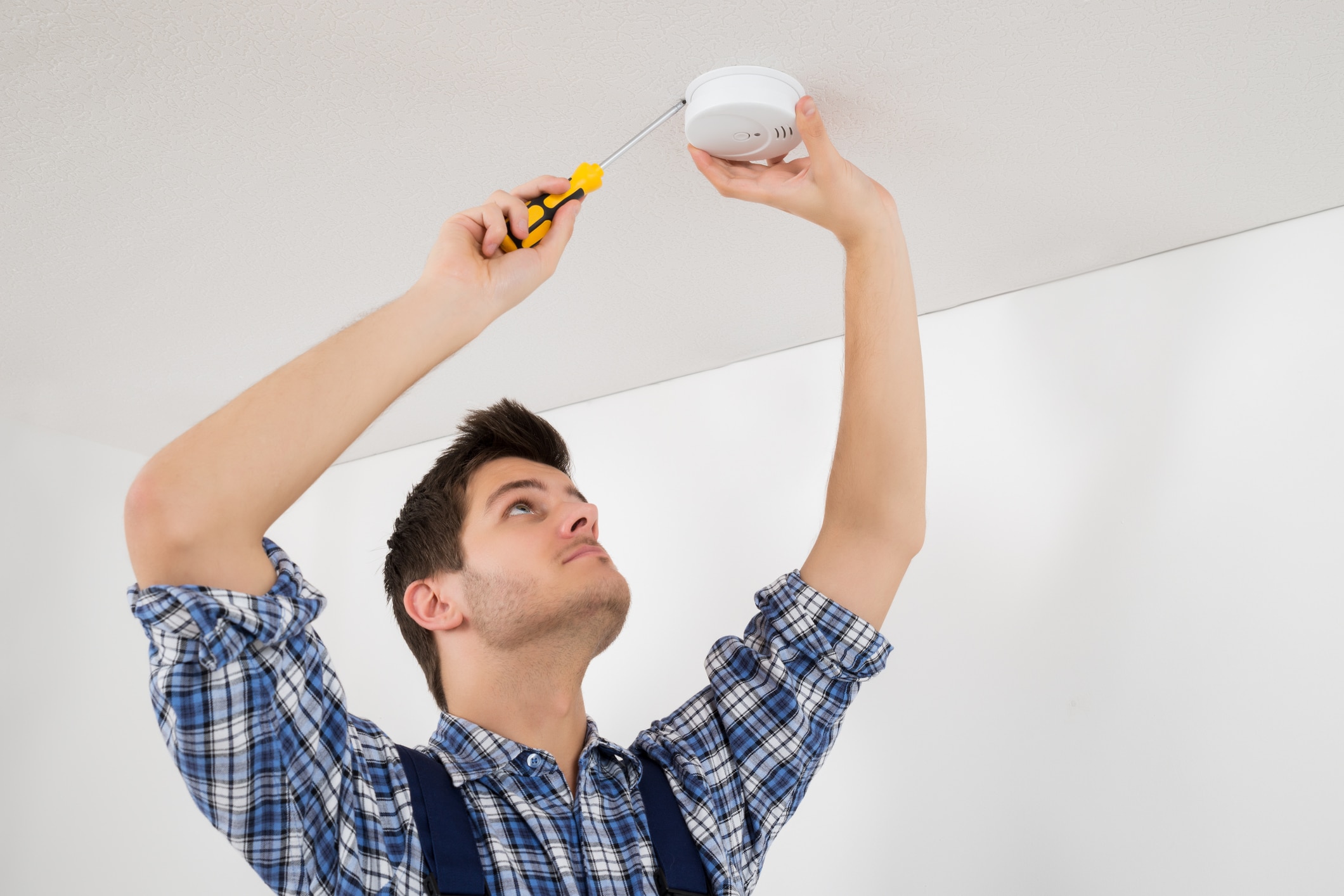Some household hazards are easy to detect and counteract: broken pipes, leaky faucets, malfunctioning air conditioners, and worn-out roofs. The most dangerous ones, by far, are carbon monoxide leaks. Since carbon monoxide (CO) is an imperceptible, highly toxic gas, it often sickens or kills quickly, without warning.
Each year more than 400 Americans die from unintentional CO poisoning. More than 20,000 will visit the emergency room and more than 4,000 are hospitalized due to CO poisoning, according to the Center for Disease Control and Prevention.
Luckily, there are CO detectors, devices that recognize the gas and warn residents about its presence. What is a CO detector, and what should you do if it goes off? Here’s everything you need to know about this life-saving device.
WHAT IS CO?
CO is an odorless, colorless, tasteless, non-irritating gas that can swiftly cause illness or even death because it’s impossible to identify without a special detector. It’s also known as the silent killer. CO is produced by any fuel-burning appliance or fixture. Some CO sources are:
• Gas appliances (furnaces, ovens, clothes dryers, water heaters)
• Fireplaces, wood stoves
• Coal or oil furnaces
• Space heaters or oil/kerosene heaters
IS CO USEFUL?
CO may be paradoxically useful in the right doses. According to a report by David J. Pinsky, M.D., Division Chief of Cardiovascular Medicine at the University of Michigan, as well as the Scientific Director of the U-M Cardiovascular Center, CO may have a life-saving effect when blood vessels are blocked, such as during a heart attack or stroke.
Packaged CO is considered to be highly useful for:
• Making esters, alcohol, and acids
• Reducing iron ore to iron
• Pharmaceutical manufacture
IS CO THE SAME AS CARBON DIOXIDE?
CO and carbon dioxide (CO2) are often confused with each other because their names sound so similar. Both are also colorless and odorless, but that’s where the similarities end. Carbon dioxide is in the earth’s atmosphere and is essential for human and plant life. It’s a byproduct of human and animal respiration. We breathe out carbon dioxide, which plants turn into the oxygen that we need to survive. This process is called photosynthesis.
WHAT IS A CO DETECTOR?
A CO detector is a device that constantly monitors the air for gas. It calculates whether the levels are high enough to threaten a dangerous CO buildup in the body. If so, they trip the detector’s 80-decibel alarm, which is enough noise to shatter even the deepest sleep. (Most CO deaths occur during sleep.) A reliable detector monitors tiny fluctuations over a certain stretch of time and shrieks only when the cumulative amount of CO exceeds safe levels.
When your detector goes off, it will sound like intermittent beeps. It will keep going off until the CO levels drop, or you push the mute button.
WHAT ARE THE SYMPTOMS OF CO POISONING?
Many people with CO poisoning mistakenly think they’re coming down with the flu when their lives are actually in danger. The symptoms are very similar:
• Headache
• Nausea and vomiting
• Rapid heartbeat or chest pain
• Confusion
• Dizziness
• Shortness of breath
• In severe cases, loss of muscular coordination or consciousness
WHAT SHOULD I DO IF MY CO ALARM GOES OFF?
Firstly, do not ignore the beeping. If you have any of the symptoms listed above, the CO’s beeping will confirm that they are not, in fact, flu symptoms. You must immediately:
• Call 911.
• Go to a hospital.
• Stay out of your home until emergency responders say it’s safe to return.
If you’re not experiencing any of these symptoms:
• Open all of your windows to ventilate the house.
• Turn off any gas-fired appliances.
• After the home has been ventilated, reset the CO detector.
• If the alarm trips again, and you’re not suffering from any CO poisoning symptoms, vent your home, leave it, and call the fire department. They’ll let you know when it’s safe to go back in.
• If the alarm does not trip again, have your appliances checked out by a qualified technician to inspect and repair any problems for peace of mind.
WHERE SHOULD THE MONITOR BE LOCATED?
There’s a misconception that CO detectors should be located near the floor because the gas is heavier than air. CO is actually slightly lighter than air and disperses evenly throughout a room.
Sometimes these alarms are installed near the bottom of a wall if they need to be plugged into an outlet that’s close to the floor. According to the guidelines of the National Fire Protection Association, all CO alarms “shall be centrally located outside of each separate sleeping area in the immediate vicinity of the bedrooms.”
Although they’re not as widely used as smoke detectors, CO detectors are equally important for ensuring your safety. They’ll protect you from a formidable threat that you can’t see, smell, or taste. Progressive Air Systems, providing outstanding service to the Tampa Bay area for 33 years, sees each customer as a family member whose welfare is our primary concern.
At Progressive Air Systems, we care about your safety, and we can expertly install the type of CO detector that best meets your needs. Please contact us 24/7 and we’ll gladly install carbon monoxide detectors, so you can sleep easy.

